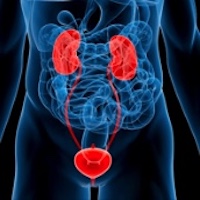Which factors affect the success of pediatric PCNL? Single center experience over 20 years

Submitted: May 24, 2020
Accepted: July 30, 2020
Published: December 18, 2020
Accepted: July 30, 2020
Abstract Views: 971
PDF: 487
Publisher's note
All claims expressed in this article are solely those of the authors and do not necessarily represent those of their affiliated organizations, or those of the publisher, the editors and the reviewers. Any product that may be evaluated in this article or claim that may be made by its manufacturer is not guaranteed or endorsed by the publisher.
All claims expressed in this article are solely those of the authors and do not necessarily represent those of their affiliated organizations, or those of the publisher, the editors and the reviewers. Any product that may be evaluated in this article or claim that may be made by its manufacturer is not guaranteed or endorsed by the publisher.
Similar Articles
- Saif Ghabisha, Faisal Ahmed, Saleh Al-wageeh, Mohamed Badheeb, Qasem Alyhari, Abdulfattah Altam, Afaf Alsharif, Prognostic determinants and treatment outcomes of Fournier’s Gangrene treatment in a resource-limited setting: A retrospective study , Archivio Italiano di Urologia e Andrologia: Vol. 95 No. 3 (2023)
- Mehdi Shirazi, Umayir Chowdhury, Faisal Ahmed, Mohammad-Bagher Rajabalian, Hossein-Ali Nikbakht , Khalil Al-Naggar , Ebrahim Al-Shami , Optimal clamping time in meatotomy procedure for children with meatal stenosis: Experience with 120 cases , Archivio Italiano di Urologia e Andrologia: Vol. 93 No. 2 (2021)
- Ali Eslahi, Faisal Ahmed, Mohammad Mehdi Hosseini , Mohammad Reza Rezaeimehr, Nazanin Fathi, Hossein-Ali Nikbakht , Mohammad Reza Askarpour, Seyed Hossein Hosseini , Khalil Al-Naggar, Minimal invasive percutaneous nephrolithotomy (Mini-PCNL) in children: Ultrasound versus fluoroscopic guidance , Archivio Italiano di Urologia e Andrologia: Vol. 93 No. 2 (2021)
- Faisal Ahmed, Hossein-Ali Nikbakht, Khalil Al-Naggar, Saleh Al-Wageeh, Qasem Alyhari, Saif Ghabisha, Ebrahim Al-Shami, Menawar Dajenah, Waleed Aljbri, Fawaz Mohammed, Abdu Al-Hajri, Role of tunica vaginalis flap and dartos flap in tubularized incisional plate for primary hypospadias repair: A retrospective monocentric study , Archivio Italiano di Urologia e Andrologia: Vol. 94 No. 2 (2022)
- Khaled Al-Kohlany, Khaled Baker, Faisal Ahmed, Murtadha Mohamed, Majdi Alshami, Mohamed Badheeb, Treatment outcome of Fournier's gangrene and its associated factors: A retrospective study , Archivio Italiano di Urologia e Andrologia: Vol. 95 No. 2 (2023)
- Ali Eslahi, Faisal Ahmed, Mohammad Rahimi, Seyed Hamed Jafari, Seyyed Hossein Hosseini, Saleh Al-wageeh, Pegah Mohammad Zadeh Shirazi, Khalil Al-naggar, Ebrahim Al-shami , Mohammad Hossein Taghrir, Outcome of Transperitoneal Laparoscopic Ureterolithotomy (TPLU) for proximal ureteral stone > 15 mm: Our experience with 60 cases , Archivio Italiano di Urologia e Andrologia: Vol. 93 No. 3 (2021)
You may also start an advanced similarity search for this article.

 https://doi.org/10.4081/aiua.2020.4.345
https://doi.org/10.4081/aiua.2020.4.345




